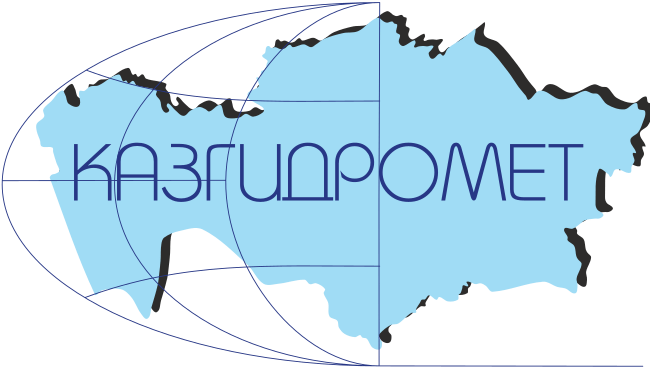FUTURE WAVE HEIGHT DYNAMICS IN THE KAZAKH PART OF THE CASPIAN SEA
DOI:
https://doi.org/10.54668/2789-6323-2025-119-4-70-83Keywords:
Caspian Sea, wave, wave height, zoning mapsAbstract
The development of oil and gas fields in the Caspian region, year-round navigation at sea, and the need to preserve biodiversity have led to a growing interest in comprehensive studies of the Caspian Sea, including wind disturbance. This study aims to investigate the process of wind waves at sea and calculate its spatial and temporal changes in the future based on numerical modeling using the SWAN spectral-wave model. Calculations of wave height projection into the future up to 2050 using climate model data from the NEX-GDDP-CMIP6 dataset for two greenhouse gas emission scenarios showed that up to 2050 the maximum wave heights can vary from 1.1 m to 4.0 m at SSP1-2.6 with the highest values in 2023, 2029, 2042; from 1.3 m to 4.1 m at SSP5-8.5 with the highest values in 2029, 2033, 2050. In the Kazakhstan part of the sea, significant and strong waves are possible in the future (for the period 2022...2050). Because by 2050 the wave height may reach 6 m in the Middle Caspian Sea it is necessary to build protective dams in the areas of oil fields and settlements, as well as strengthening and reconstruction of previously built.
References
Ardhuin F., Orfila A. (2018). Wind waves. New Frontiers in operational oceanography, Chapter 14, pp. 393-422 doi:10.17125/gov2018.ch14.
Casas-Prat M., Hemer M.A., Dodet G., Morimm J., Wang X., Mori N., Young I., Erikson L., Kamranzad B., Kumar P., Menen-dez M., Feng Y. (2024). Wind-wave climate changes and their impacts. Nature Reviews Earth and Environment 5, 23–42. doi: 10.1038/s43017-023-00502-0
Zou Q, Chen H. (2017). Wind and Current Effects on Extreme Wave Formation and Breaking. Journal of Physical Oceanography, 47, 1817–1841. doi: 10.1175/JPO-D-16-0183.1
Chen H., Zou Q. (2022). Geometry of Deep and Intermediate Water Breaking Waves Influenced by Wind Speed and Direction. Physics of Fluids, 087126, 13. doi: 10.1063/5.0101943.
Abuzyarov Z.K. (1981). Sea swell and its forecasting. Hydrometeoizdat, 162 p. http://elib.rshu.ru/files_books/pdf/img-417193526.pdf [in Russian]
Abuzyarov Z.K., Shamraev Y.I. (1974). Marine hydrological information and forecasts. Hydrometeoizdat, 218 p. https://korobkaknig.ru/gumanitar_nauka/nauki_o_zemle/morskie-gidrologicheskie-informacii-i-prognozy-35051.html [in Russian]
Abuzyarov Z.K., Dumanskaya I.O., Nesterov E.S. (2009). Operational oceanographic service, IG-SOCIN, 288 p. https://meteoinfo.ru/images/media/books-docs/ocean-monogr.pdf [in Russian]
Nesterov E.S. (2015). Extreme waves in oceans and seas, IG-SOCIN, 64 p. https://meteoinfo.ru/images/media/books-docs/special/nao-nesterov.pdf [in Russian]
Lopatukhin L.I. (2019). Wind-wave climate of the Caspian Sea. Meteorological Research, 47 (5), 89-97. doi:10.29006/1564-2291.JOR-2019.47(5).7 [in Russian]
Myslenkov S.A. (2017). Diagnosis and forecast of wind waves in the coastal zone of the Black Sea. Ph.D. Thesis, Moscow, Russia, 161 p. https://ipfran.ru/files/293/2017-myslenkov-diss.pdf [in Russian]
Pavlova A., Myslenkov S., Arkhipkin V., Surkova G. (2022). Storm surges and storm wind waves in the Caspian Sea in the present and future climate. Civil Engineering Journal. Vol 8, №11. p. 2353-2377. doi: 10.28991/CEJ-2022-08-11-01
Lebedev S.A. (2014). Satellite altimetry of the Caspian Sea. Ph.D. Thesis, Moscow, Russia, 350 p [in Russian]
Lebedev S., Kostianoy A. (2006). Satellite altimetry of the Caspian Sea. Current problems in remote sensing of the Earth from space. Vol.3, No.2, Р. 113–120. http://www.iki.rssi.ru/earth/articles06/vol2-113-120.pdf
. Lavrova O.Yu., Kostyanoy A.G., Lebedev S.A., Mityagina M.I., Ginzburg A.I., Sheremet N.A. (2011). Integrated satellite monitoring of the Russian seas. IKI RAS, 2011, p. 480. [in Russian]
Yaitskaya N.A. (2017). Retrospective analysis of wind waves in the Caspian Sea in the second half of XX - early XXI centuries and the relationship with regional manifestations of climate change. Geographical Bulletin, 2(41), 57-70. doi 10.17072/2079-7877-2017-2-57-70 [in Russian]
Lopatukhin L.I., Yaitskaya N.A. (2019). Wave climate of the Caspian Sea. Wind input data for hydrodynamic modelling and some calculation results. Oceanology. 59 (1), 12-21. doi: 10.31857/S 0030-15745912-21
Lopatukhin L.I., Yaitskaya N.A. (2019). Data of reanalysis of wind fields over the Caspian Sea for calculation of the wind wave regime. Water Resources, 46 (6), 598-604. doi: 10.31857/S0321-0596466598-604
Myslenkov S.A., Arkhipkin V.S., Pavlova A.V., Dobrolyubov S.A. (2018). Wave climate of the Caspian Sea based on modelling data. Meteorology and Hydrology, 10, 60-70. https://istina.msu.ru/publications/article/156853005/
Dobrovolskiy A.D., Zalogin B.S. (1982). Seas of the USSR. Moscow: Moscow State University Publ., 192 p. [in Russian]
Yeltay A., Ivkina N.I., Klove Bjorn (2019). Wind influence on wave height in the Kazakhstan part of the Caspian Sea. Central Asian Journal of Water Resources Research, 5 (1-2), 82-94. doi: 10.29258/CAJWR/2019-R1.v5-1/58-70.eng
Yeltay A., Ivkina N., Narbayeva K. (2023). Verification of the results of the SWAN model for the water area near port Aktau. GEOMATE Journal, 25 (109), 77-84. doi: 10.21660/2023.109.m2305
Yeltay A. (2019). Monitoring of wind waves on the Kazakhstani coast of the Caspian Sea.Modern trends and prospects for the development of hydrometeorology in Russia, Irkutsk, June 5–7, 2019, pp. 172–178. [in Russian]
Mahmoudof D., Takami M. (2022). Numerical study of coastal wave profiles at the sandy beaches of Nowshahr (Southern Caspian Sea). Oceanologia Volume 64, Issue 3, July–September 2022. pp. 457-472.
Kamranzad D., Etemad-Shahidi A, Chegini V. (2016). Sustainability of wave energy resources in southern Caspian Sea. Energy Volume 97, 15 February 2016. pp. 549-559.
Strukov B.S., Zelenko A.A., Resnyansky Yu.D., Martynov S.L. (2012). Verification of the Wind Wave Forecasting System for the Black, Azov and Caspian Seas. Research Activities in Atmospheric and Oceanic Modelling. WCRP Informal Report № 5. CAS/JSC WGNE, Geneva: WMO, 2012. pp. 8.5–8.6. https://meteoinfo.ru/images/misc/sovet/zelenko/avtoreferat_zelenko.pdf
Strukov B.S., Zelenko A.A., Resnyansky Y.D., Martynov S.L. (2013). Wind wave characteristics forecasting system and the results of its testing for the Azov, Black and Caspian Seas. Information Collection № 40 New technologies, models and methods of hydrometeorological forecasts and the results of their operational tests, pp. 64-79 https://meteoinfo.ru/images/misc/sovet/zelenko/avtoreferat_zelenko.pdf
Bruneau N., Toumi R. (2016). A fully-coupled atmosphere-oceаn-wave model of the Caspian Sea. Ocean Modeling. Vol. 107, pp. 97-111. doi: 10.1016/j.ocemod.2016.10.006
Rusu E., Onea F. (2013). Evaluation of the wind and wave energy along the Caspian Sea. Energy, Vol. 20137, pp. 1-14 doi: 10.1016/J.ENERGY.2012.11.044.
Ivkina N.I., Galaeva A.V. (2017). Forecasting of wind waves in the Caspian Sea using the SWAN model. Hydrometeorology and Ecology, 2 (85), 36-45. https://journal.kazhydromet.kz/index.php/kazgidro/article/view/1073
Mammadov R.M. (2014). Hydrometeorological atlas of the Caspian Sea. Baku [in Russian]
(2015). The electronic atlas of the Caspian Sea was developed with the support of the Russian Geographical Society. [Electronic resource]. URL: http://www.geogr.msu.ru/casp/ (date of access 10.10.2023)
Baidin S.S., Kosarev A.N. (1986). Caspian Sea: Hydrology and Hydrochemistry. Nauka, p. 261 [in Russian]
Kerimov A.A., Kosarev A.N., Terziev F.S. (1992). Project "Seas. Hydrometeorology and Hydrochemistry of the Seas". Volume VI Caspian Sea, Issue 1 Hydrometeorological conditions. Hydrometeoizdat, p. 358. https://www.geokniga.org/node/10916 [in Russian]
The Caspian Sea Lotiya, GUNiO (2016). p. 406. https://navysoft.ru
CASPCOM. Caspian Sea Level Information Bulletin No. 23 dated 13 May 2022 [Electronic resource]. URL: http://www.caspcom.com/files/CASPCOM%20Bulletin%20No.%2023_1.pdf. (date of access 15.06.2023)
Nesterov E.S. (2016). Water balance and Caspian Sea level fluctuations. Modelling and Forecasting, Triada. p. 378. http://www.caspianmonitoring.ru/wp-content/uploads/2018/08/8-Nesterov.pdf [in Russian]
Shiklomanov I.A. (1988). Land water resources research: results, problems, prospects, Hydrometeoizdat, p. 152. http://elib.rshu.ru/files_books/pdf/img-09056.pdf [in Russian]
Surface water resources of the USSR (1970). Issue 12, Lower Volga Region and Western Kazakhstan, Vol. 2. Ural-Embinsky district, Hydrometeoizdat, p. 510. http://www.cawater-info.net/library/ussr-water-resources.htm [in Russian]
Annual data on the regime of the Caspian Sea, Kazakhstan coast for 2020 (2022). RSE Kazhydromet, p. 61. https://www.kazhydromet.kz/en/kaspiyskoe-more/ezhegodnye-dannye-o-rezhime-kaspiyskogo-morya
GEBCO [Electronic resource]. URL: https://download.gebco.net/ (date of access 15.09.2021)
Global Daily Downscaled Projections (NEX-GDDP-CMIP6) [Electronic resource]. URL: https://www.nasa.gov/nex/gddp. (date of access 01.02.2023)
SWAN user manual (2024). Netherlands: Delft University of Technology, 146 p. https://swanmodel.sourceforge.io/download/zip/swanuse.pdf
SWAN. Scientific and technical documentation (2024). Netherlands: Delft University of Technology, 168 p. https://swanmodel.sourceforge.io/download/zip/swantech.pdf
Yeltay A., Narbaeva K. (2023). Wind disturbance in the Kazakhstan part of the Caspian Sea. International Conference of Students and Young Scientists “Farabi әlemi”, 3 p. [in Russian]
Law on Subsoil and Subsoil Use of the Republic of Kazakhstan dated 27 December 2017 No. 125-VI [Electronic resource]. URL: https://adilet.zan.kz/rus/docs/K1700000125. (date of access 15.06.2023) [in Russian]
Environmental Law of the Republic of Kazakhstan dated 2 January 2021 No. 400-VI. [Electronic resource]. URL: https://adilet.zan.kz/rus/docs/K2100000400 (date of access 15.06.2023) [in Russian]
Bogoslovsky B.B. (1980). Waves, currents and water masses of reservoirs. Leningrad, p. 58. [in Russian]
Atlas of zoning of seas and oceans for hydrometeorological support of maritime activities (2009). OJSC "Fabrika Offsetnoy Print", p. 43. http://mgmtmo.ru/edumat/normdoc/28_48.pdf [in Russian]
Drobot G.A., Kochetkova E.V. (2009). Ecological problems as a global threat to security, Bulletin of Moscow University, Issue.18, Sociology and Political Science, No.3, p. 61-73. [in Russian]
Downloads
Published
How to Cite
Issue
Section
License
Copyright (c) 2025 Серик Саиров, Айзат Елтай, Галина Шишкина, Айгерім Құрманғалиева, Лаура Базарбай, Нұрғаным Жағпарова

This work is licensed under a Creative Commons Attribution-NonCommercial 4.0 International License.





